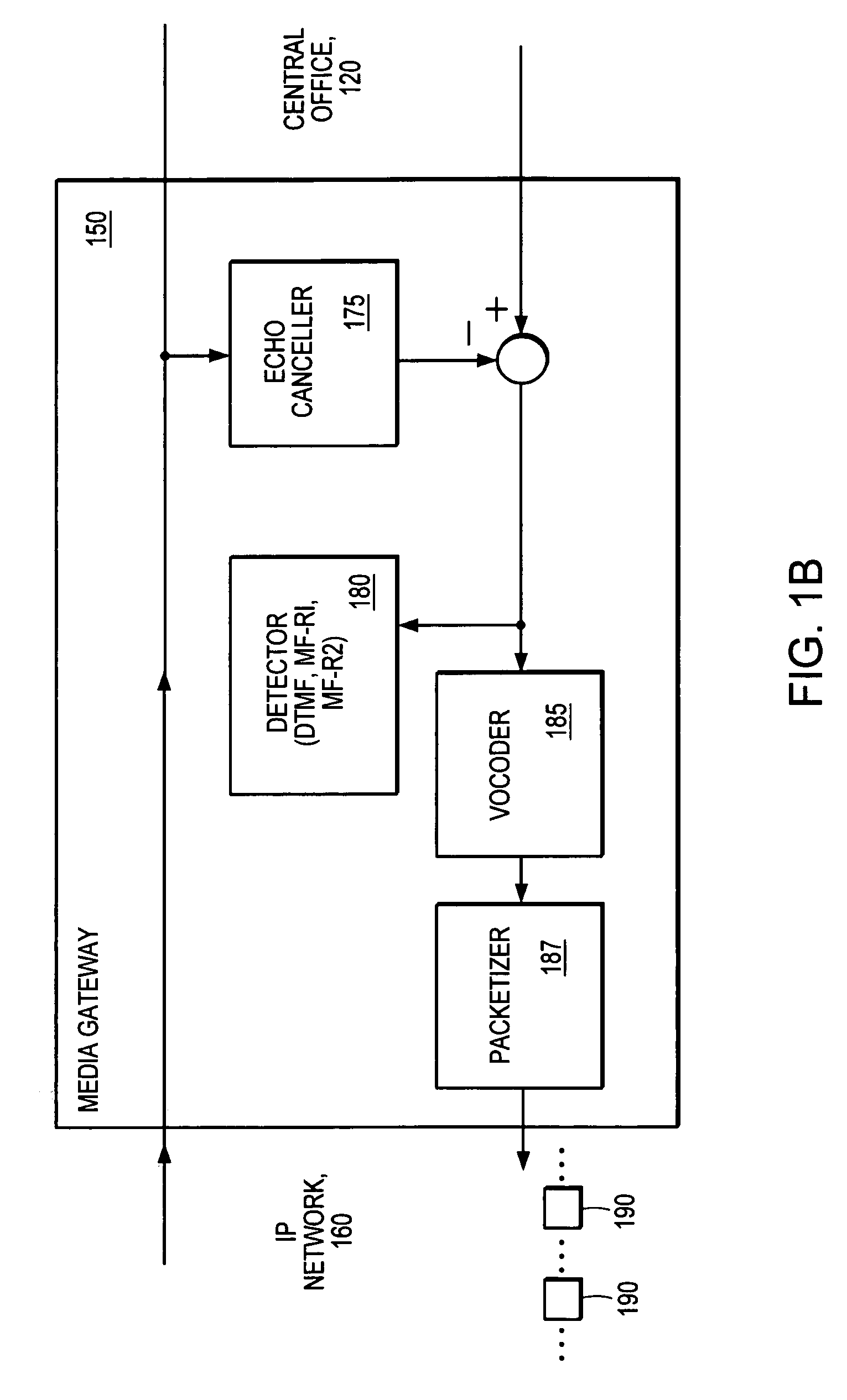Method and apparatus for performing high-density DTMF, MF-R1, MF-R2 detection
a detection method and high-density technology, applied in electrical equipment, substation equipment, interconnection arrangements, etc., can solve the problems of still inefficient dtmf context and achieve significant computational overhead for filtering, reduce computational complexity, and accelerate data acquisition
- Summary
- Abstract
- Description
- Claims
- Application Information
AI Technical Summary
Benefits of technology
Problems solved by technology
Method used
Image
Examples
case1
[0078]Case1:0.14≤E0E1≤7.08
case 1
[0079 corresponds to the upper and lower subband energies being within + / −8.5 dB of each other. In this case, there is a high likelihood that tones are present in both the upper and lower subbands. The MF detector 850b then proceeds exactly as in the case of DTMF, picking one tone from each subband. The bandwidth test is then performed using the lowest output energies from the upper and lower subband notches, as determined in steps 925c, 925b, respectively. If E0>E0,1α1 (step 945a) and E1>E1,uαu (step 930a), where E0,1 and E1,u are the minimum output energies for the lower and upper subbands respectively, then, in step 950a, the MF detector 850b picks the digit referenced by the two tones.
case2
[0080]Case2:E0E1>7.08
[0081]FIG. 11B is a flow diagram of an embodiment of a process of Case 2 of the MF detector. In Case 2, it may be that either (i) there is a twist larger then +8.5 dB in the MF signal (with tones present in both subbands) or (ii) all the energy is present in the upper subband. Case 2 then searches for the lowest two output energies, Eo,u1 (step 925d) and Eo,u2 (step 925e) from the four upper subband frequencies.
[0082]The first test (step 936a) checks to see how noisy the signal is. If
[0083]E0,u1+Eo,u2E01.35,
the signal is assumed to be relatively noise free. The rationale behind the test of step 936a is that as the noise level in the signal rises (noise in this case being any signal that is not an MF frequency tone), the ratio of
[0084]E0,u1+Eo,u2E0
gets closer and closer to 2.00. For a white noise signal, and using notches of infinitesimal width, the ratio approaches 2.00. On the other hand, with no background noise (i.e. only tonal energy), the ratio approache...
PUM
 Login to View More
Login to View More Abstract
Description
Claims
Application Information
 Login to View More
Login to View More - R&D
- Intellectual Property
- Life Sciences
- Materials
- Tech Scout
- Unparalleled Data Quality
- Higher Quality Content
- 60% Fewer Hallucinations
Browse by: Latest US Patents, China's latest patents, Technical Efficacy Thesaurus, Application Domain, Technology Topic, Popular Technical Reports.
© 2025 PatSnap. All rights reserved.Legal|Privacy policy|Modern Slavery Act Transparency Statement|Sitemap|About US| Contact US: help@patsnap.com



